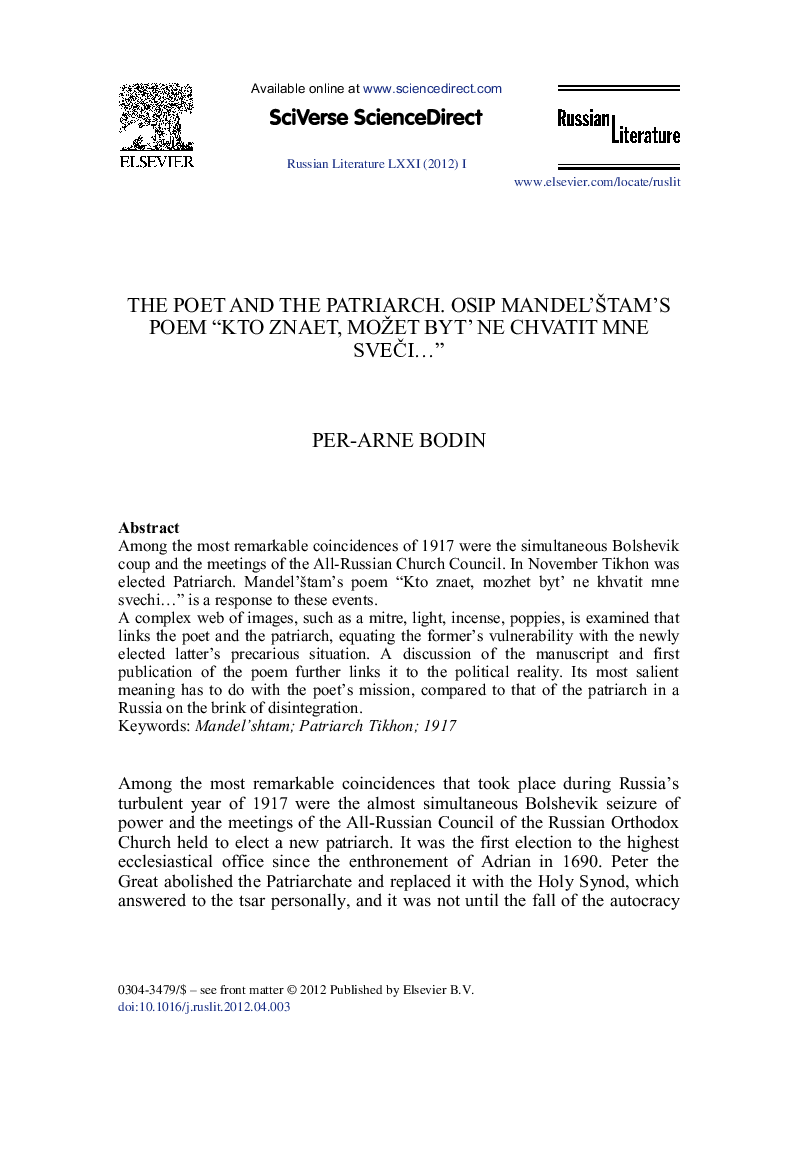| Article ID | Journal | Published Year | Pages | File Type |
|---|---|---|---|---|
| 1103966 | Russian Literature | 2012 | 18 Pages |
Abstract
Among the most remarkable coincidences of 1917 were the simultaneous Bolshevik coup and the meetings of the All-Russian Church Council. In November Tikhon was elected Patriarch. Mandelʼštamʼs poem “Kto znaet, mozhet bytʼ ne khvatit mne svechi…” is a response to these events.A complex web of images, such as a mitre, light, incense, poppies, is examined that links the poet and the patriarch, equating the formerʼs vulnerability with the newly elected latterʼs precarious situation. A discussion of the manuscript and first publication of the poem further links it to the political reality. Its most salient meaning has to do with the poetʼs mission, compared to that of the patriarch in a Russia on the brink of disintegration.
Related Topics
Social Sciences and Humanities
Arts and Humanities
Language and Linguistics
